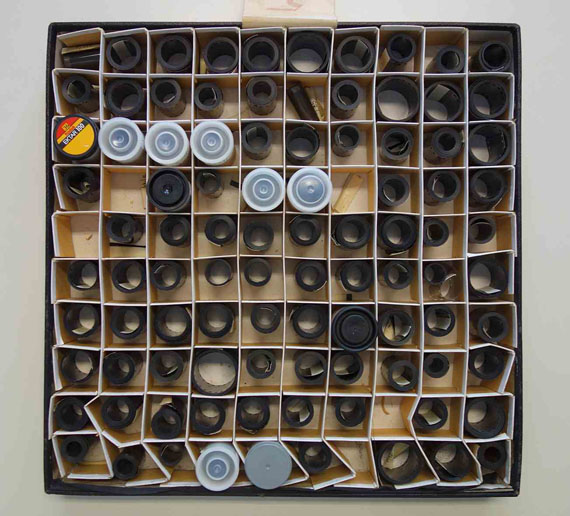
Unboxing Photographs.
Working in the Photo Archive / Arbeiten im Fotoarchiv
JUTOJO » Ola Kolehmainen » Joachim Schmid » Akram Zaatari » & others
Exhibition: 16 Feb – 27 May 2018
Thu 15 Feb 19:00
Kunstbibliothek
Kulturforum / Matthäikirchplatz
10785 Berlin
Tue-Fri 10-18, Sat/Sun 11-18
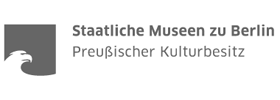
Kunstbibliothek
Kulturforum / Matthäikirchplatz
10785 Berlin
+49 (0)30-266 42 41 01
kb@smb.spk-berlin.de
www.smb.museum/mf
Tue-Fri 10-18, Sat/Sun 11-18
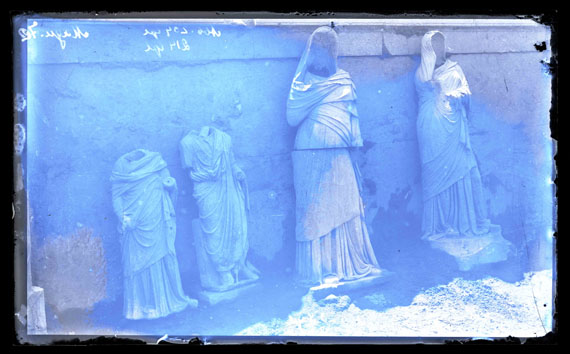
"Unboxing Photographs. Working in the Photo Archive"
Exhibition: 16 February - 27 May, 2018
Opening: Thursday, 15 February, 7pm
An exhibition of the collaborative project "Photo-Objects – Photographs as (Research) Objects in Archaeology, Ethnology and Art History", Photothek des Kunsthistorischen Instituts in Florenz – Max-Planck-Institut / Sammlung Fotografie der Kunstbibliothek und Antikensammlung, both Staatliche Museen zu Berlin – Preußischer Kulturbesitz / Institut für Europäische Ethnologie der Humboldt-Universität zu Berlin, sponsored by the German Federal Ministry for Education and Research, the Schering Stiftung, and the Verein der Freunde der Antike auf der Museumsinsel Berlin e.V.
"Unboxing Photographs. Working in the Photo Archive" opens the boxes of four photo archives to showcase the material diversity of photographs as three-dimensional objects: from glass plate negatives, to 35 mm film, to prints on albumen or silver gelatin paper. These photo-objects are taken in the hand, tilted and turned over, labeled, cut down, framed, glued into albums, printed, and dispatched or posted online. Contact and inventory sheets, cardboard mounts, card catalogs, and today even display screens are integral parts of the photo-object, or even constitute it.
Since the 19th century, archaeologists, ethnologists, and art historians have worked with photographs and assembled them in archives. There, they are processed and ordered – and only through such treatment do they become usable as documents for scholarly research. These procedures alter the physical properties of photographs and leave behind material traces. Photographs, hence, are neither objective nor timeless. By taking them seriously as objects, and not just as pictures, it becomes possible to tell their multifarious stories. The exhibition interrogates the commonly practiced and disciplinary conventions that govern the perception and presentation of photographs – for example museum display using passepartouts – and tries out new design possibilities. Work with photo-objects is also central to the artistic interventions of JUTOJO, Ola Kolehmainen, Joachim Schmid, Elisabeth Tonnard, and Akram Zaatari, all of which have been integrated into the exhibition.
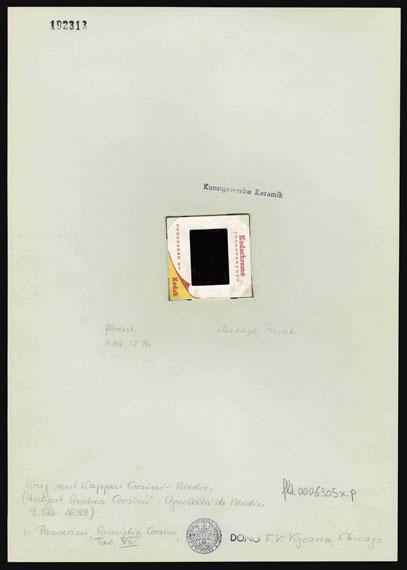
transparency on cardboard mount, without date
© Kunsthistorisches Institut in Florenz – Max-Planck-Institut
"Unboxing Photographs. Arbeiten im Fotoarchiv"
Ausstellung: 16. Februar bis 27. Mai 2018
Eröffnung: Donnerstag, 15. Februar, 19 Uhr
Eine Sonderausstellung des Verbundprojekts "Foto-Objekte – Fotografien als (Forschungs-)Objekte in Archäologie, Ethnologie und Kunstgeschichte", Photothek des Kunsthistorischen Instituts in Florenz – Max-Planck-Institut / Sammlung Fotografie der Kunstbibliothek und Antikensammlung, beide Staatliche Museen zu Berlin – Preußischer Kulturbesitz / Institut für Europäische Ethnologie der Humboldt-Universität zu Berlin, gefördert vom Bundesministerium für Bildung und Forschung, der Schering Stiftung und dem Verein der Freunde der Antike auf der Museumsinsel Berlin e.V.
"Unboxing Photographs. Arbeiten im Fotoarchiv" öffnet die Schachteln von vier Fotoarchiven und zeigt die materielle Vielfalt von Fotografien als dreidimensionale Objekte: vom Glasplattennegativ über den Kleinbildfilm bis zum Abzug auf Albumin- oder Silbergelatinepapier. Diese Foto-Objekte werden in die Hand genommen, gedreht und gewendet, beschriftet, beschnitten, gerahmt, in Alben geklebt, ausgedruckt und verschickt oder ins Internet gestellt. Auch Kontaktabzüge, Erfassungsbögen, Trägerkartons, Karteikarten und natürlich auch der Bildschirm sind Bestandteil eines Foto-Objekts beziehungsweise bilden es.
Seit dem 19. Jahrhundert arbeiten Archäologie, Ethnologie und Kunstgeschichte mit Fotografien und sammeln diese in Archiven. Dort werden sie bearbeitet und geordnet – und damit überhaupt erst zu benutzbaren Dokumenten für die Wissenschaft gemacht. Diese Handlungen ändern ihre physische Beschaffenheit und hinterlassen Spuren. Daher sind Fotografien weder objektiv noch zeitlos. Sie als Objekte, und nicht nur als Bilder, ernst zu nehmen, erlaubt es, ihre vielfältigen Geschichten zu erzählen. Die Ausstellung hinterfragt gängige wie disziplinäre Wahrnehmungs- und Darstellungskonventionen von Fotografien, wie das Hängen in Passepartouts in Museen, und erprobt neue Möglichkeiten der Gestaltung. Die Arbeit mit Foto-Objekten steht auch im Zentrum der in die Schau integrierten künstlerischen Interventionen von JUTOJO, Ola Kolehmainen, Joachim Schmid, Elisabeth Tonnard und Akram Zaatari.
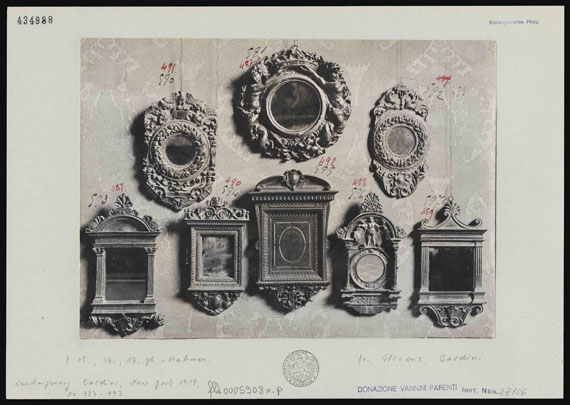
© Kunsthistorisches Institut in Florenz – Max-Planck-Institut